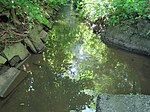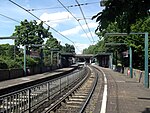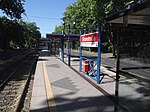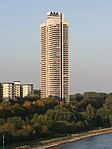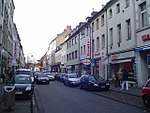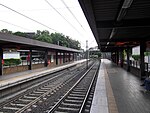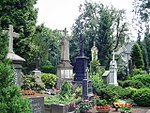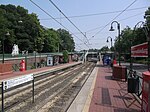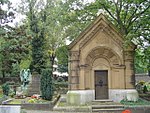Mülheim Bridge, Cologne
Bridges completed in 1951Bridges in North Rhine-WestphaliaBridges over the RhineBuildings and structures in CologneEuropean bridge (structure) stubs ... and 6 more
German building and structure stubsGermany transport stubsMülheim, CologneNorth Rhine-Westphalia building and structure stubsRoad bridges in GermanySuspension bridges in Germany
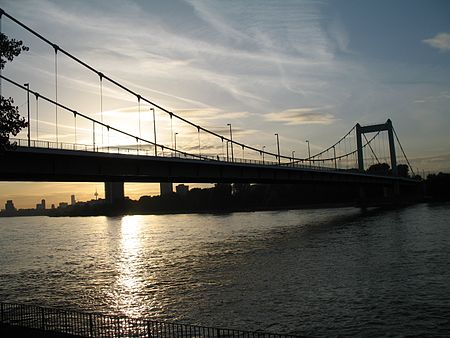
The Mülheim Bridge (German: Mülheimer Brücke [ˈmyːlhaɪmɐ ˌbʁʏkə]; Kölsch: Möllemer Bröck [ˈmøləmɐ ˌbʁøkˑ]) in Cologne is a suspension bridge on the river Rhine in western Germany. It has a main span of 315 metres. The bridge was originally completed in 1929. On October 14–15, 1944, an American bomb struck the chamber containing the demolition charges, destroying the bridge. The bridge was rebuilt between 1949 and 1951. It connects the city district Riehl on the west side of the river with Mülheim on the east side, after which the bridge is named.
Excerpt from the Wikipedia article Mülheim Bridge, Cologne (License: CC BY-SA 3.0, Authors, Images).Mülheim Bridge, Cologne
Mülheimer Freiheit, Cologne Mülheim (Mülheim)
Geographical coordinates (GPS) Address External links Nearby Places Show on map
Geographical coordinates (GPS)
| Latitude | Longitude |
|---|---|
| N 50.964444444444 ° | E 6.9952777777778 ° |
Address
Mülheimer Brücke
Mülheimer Freiheit
51063 Cologne, Mülheim (Mülheim)
North Rhine-Westphalia, Germany
Open on Google Maps
